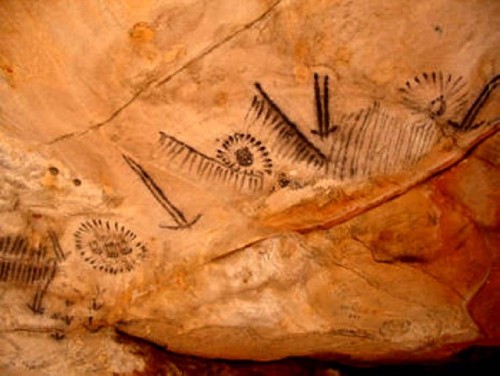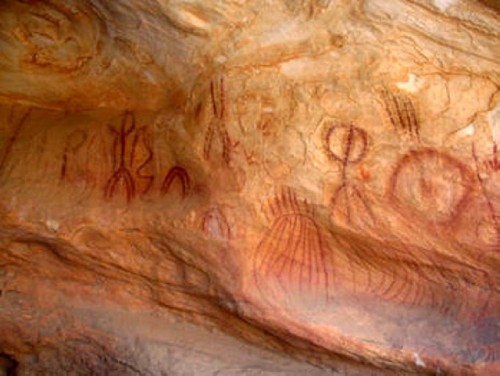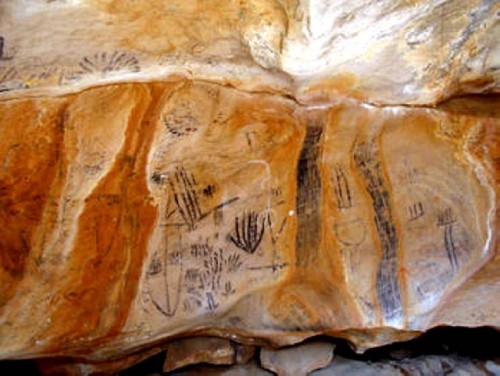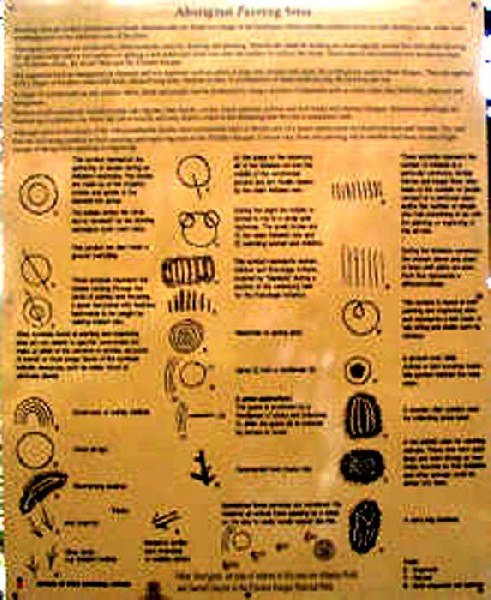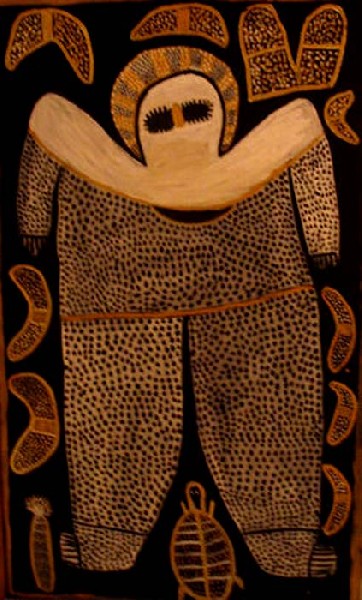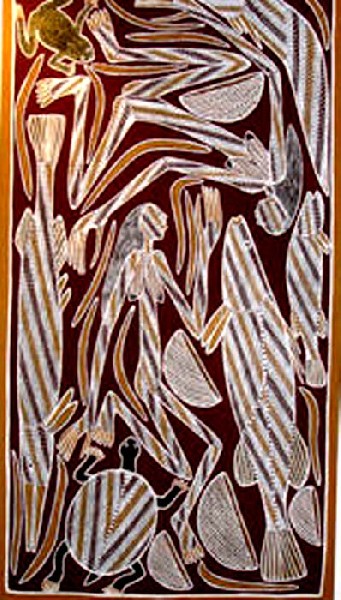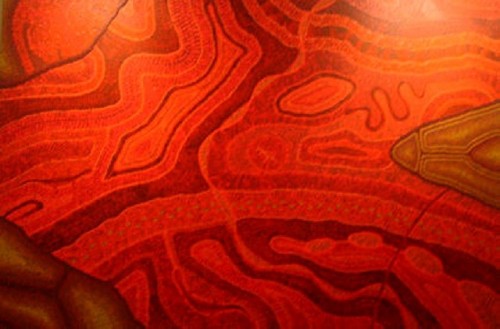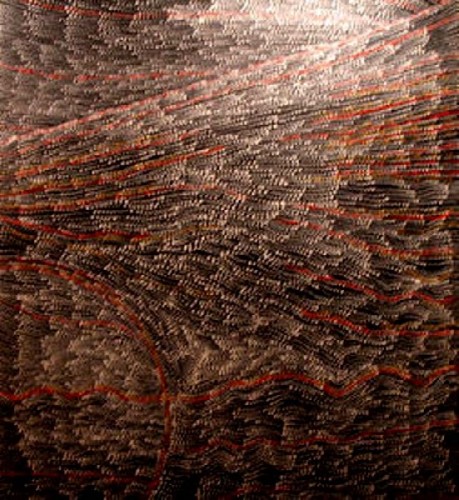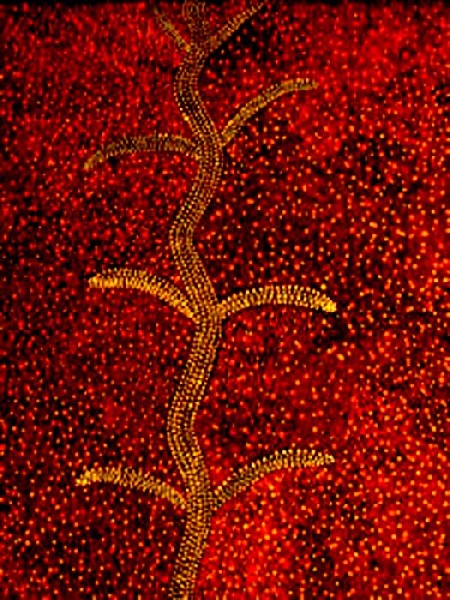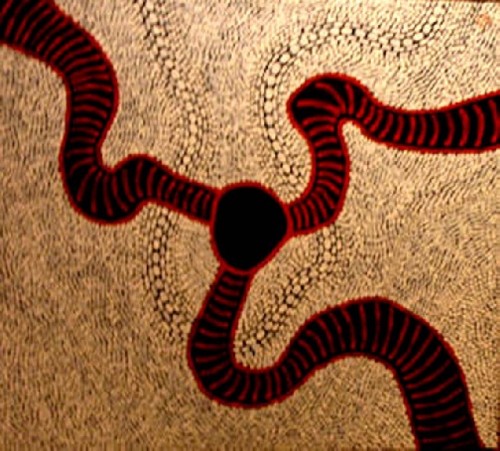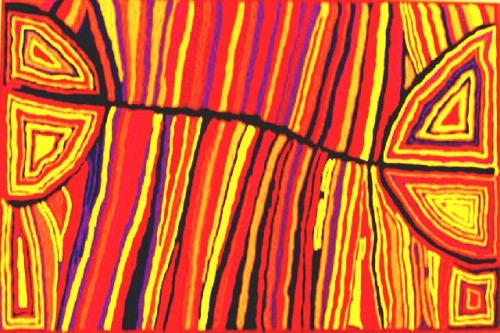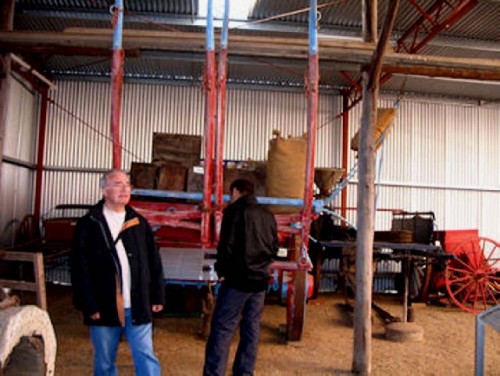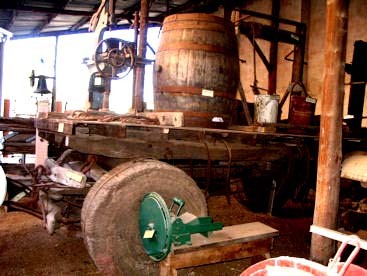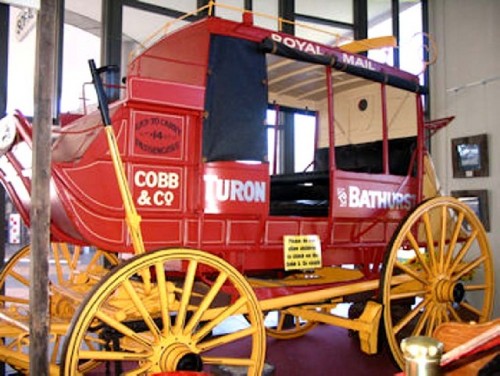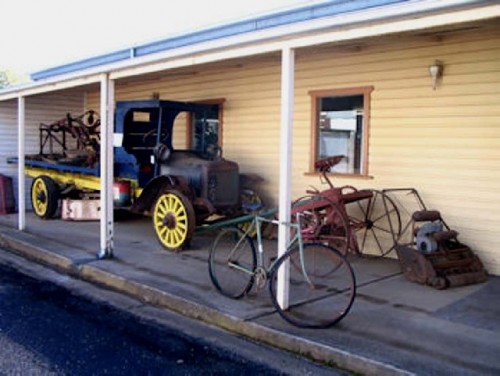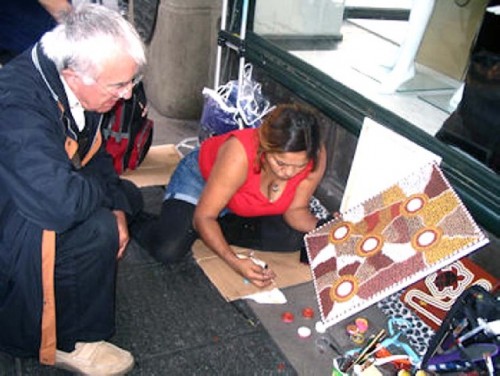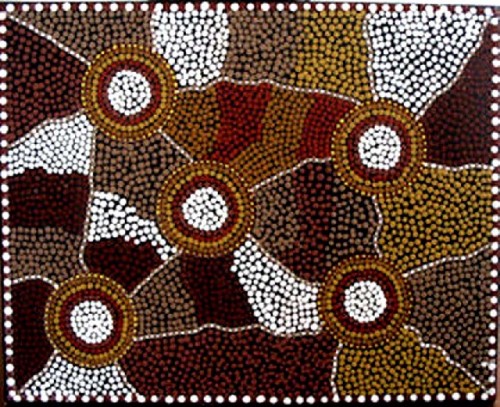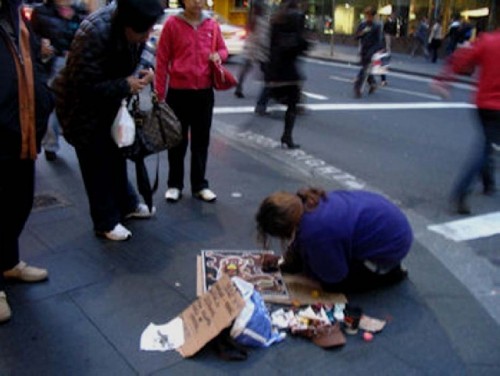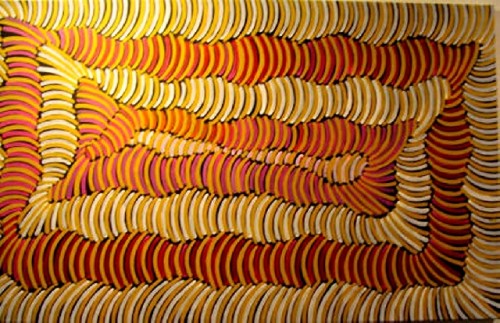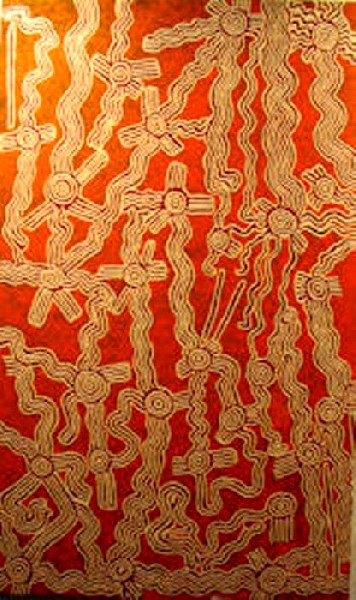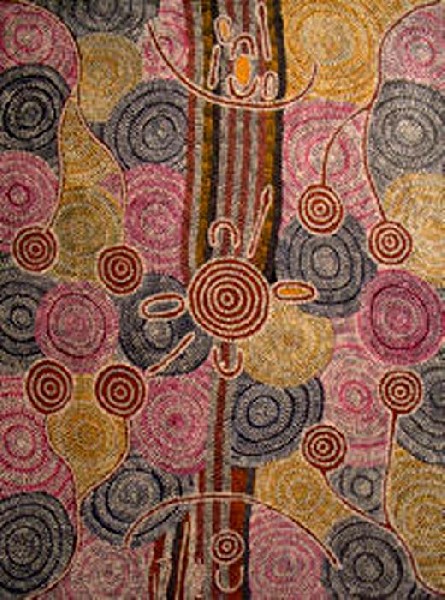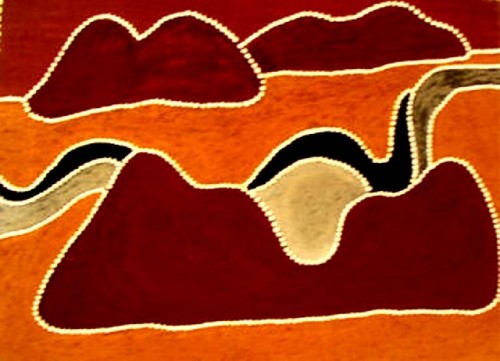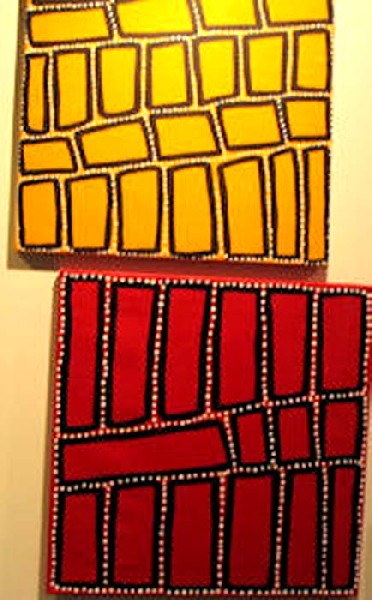Searching for Origins: Australian Art and Culture
Six Weeks Traveling to Cities and Outback
By: Jean-Marie Delverdie ~ Astrid Hiemer, Translator - Dec 01, 2010
In September 2009 we spent ten days in Paraza, a village in Southern France, as invited reporters of Dorothea Fleiss, East-West Artists, and Maison Endriss. Paraza was hosting the “12th International Symposium of Contemporary Art.” One of the many friends we made during those days is Jean-Marie Delverdie, who is a photographer and computer specialist. He also taught German in High School in France and our common language allowed us to become friends with a deeper connection. His wife, Maryse Roumengous, is an art historian, so our mutual interests in world cultures and art have brought us together.
My role here is that of a translator and editor of Delverdie’s article, written in German. I also selected a series of their photographs for publication. The couple’s primary reason to travel to Australia, in June and July of this year, was to get to know their grand-daughter Manon better, who is seven years old and lives in New Castle, North-East of Sydney.
Please read Delverdie’s article:
During a prior trip to Australia in 2004 Maryse had seen and photographed ancient Cave Drawings at the Mungo National Park. She was very intrigued by Aboriginal art, but at that time, few paintings by Aboriginal artists could be seen in galleries. Today, more works are being presented, mostly in Brisbane and Sydney. The paintings show traditional and symbolic images: Snakes that lived during the Golden Time, called the Time of Dreams, in Aboriginal Mythology. The snake refers to their ancestors and their first God and has different names in various regions. In New South Wales she is called Kurreah. Other images may represent men hunting, women carrying water jugs, boomerangs and lizards, which are of nutritional value.
Contemporary art is now also on exhibition: Images that may represent wind and billowing savanna grass, not figuratively, in ways that remind us of Western abstract forms. Those works may be done in various colors as well as in ‘shocking’ color schemes.
We decided to drive west in the direction of Dubbo and smaller towns like Mudgee, Gulgong, Orange and Forbes. The visit of local museums proved to be insightful. The buildings were usually old shacks or small ware houses. We encountered an amazing amount of ‘things on exhibition,’ like agricultural machinery from the 1930s – 1950s, industrial and craftsmen machinery, small house-hold items, old radios and record players, and old clothing worn for special occasions. We felt that people without a long history, experience a lack of their own roots and a need to create their history, which I thought to be absolutely positive !
The skylines of the Sydney Opera House or the Harbour Bridge are known world-wide, but the Art Gallery of New South Wales must also not be missed by any visitor. We saw among interesting special exhibitions Aboriginal art installations, which provided an overview of the development of the art form to the present. The oldest pieces were made on bark, like orthodox icons.
In downtown Sydney, on Pitt Street or George Street, in the direction of King Street, one can find several art galleries. We were just emerging from a gallery, when we came upon an intriguing scene. An Aboriginal artist and her companion were making street paintings, of approximately 15” x 20”or 40 x 60 cm scale. We carefully looked at her paintings, one especially interested me and I purchased it. Cherie, the artist, suggested that it was not entirely finished. She wanted to emphasize the white dots, painted them again and then handed me the painting.
Meanwhile, Maryse wanted to buy another painting, which Cherie had just begun. We decided to return the next day, but it was not finished. Cherie promised that it would be available in two hours and so we returned. Again, the painting was not done, but she insisted to finish it right then and there, and she did. Her companion protested, because it was already night time!
While we were observing how Cherie painted, many visitors, who would not have taken notice, stopped, watched, and also asked her questions about her work. She has probably never had such an interested crowd around her. What a wonderful moment!
During our conversation with Cherie we learned that she did not want to work with an art gallery, because the Aboriginal artist would only receive pitons for their sold works from the gallery. We believed her, because we checked prices of works of comparable quality. We also understand, that there are only few famous enough Aboriginal artists, who can support themselves with their art work.
We spent six weeks living and traveling in Australia and encountered friendly and attentive people every where, in the outback as well as in the cities. Here, we only report on a small aspect of Australian art and culture. We will return in the near future to visit Manon again and her continent.

